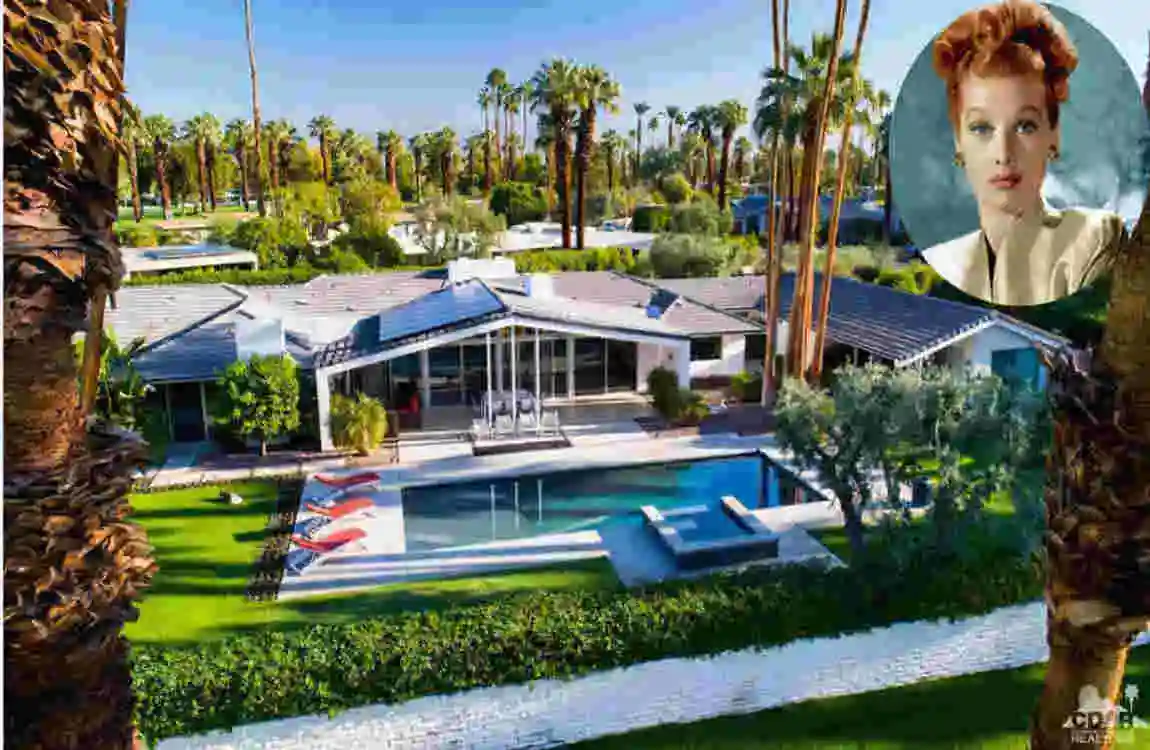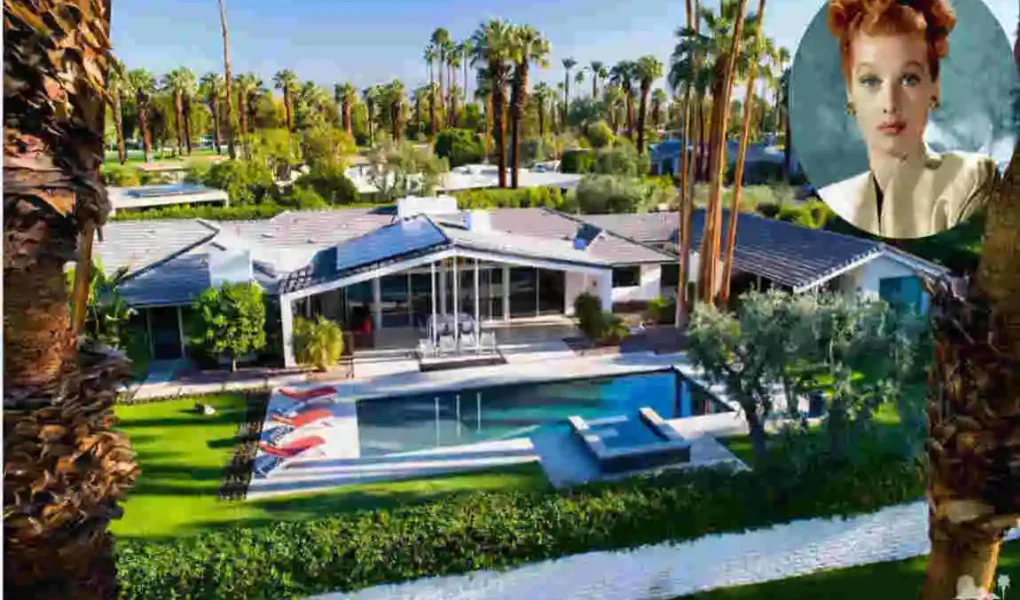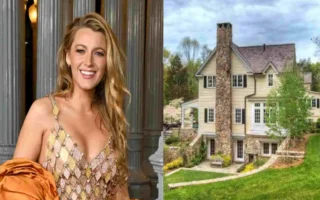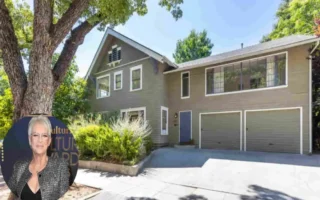Lucille Ball, a name synonymous with comedy, innovation, and timeless charm, remains one of the most beloved icons in American pop culture. Known for her groundbreaking television series, I Love Lucy, Lucille Ball’s influence on the entertainment world is undeniable. Yet, beyond the laughter and glamour, her homes in Jamestown, New York, and Beverly Hills, California, offer a fascinating glimpse into her personal life, growth, and legacy. These houses, each unique and tied to distinct phases of her life, continue to inspire fans and history enthusiasts alike.
Lucille Ball’s Early Life and Jamestown Childhood Home
Growing Up in Jamestown, New York
Lucille Ball was born on 6 August 1911, in Jamestown, New York—a small, unassuming town that played a significant role in shaping her early years. Her childhood was marked by love, resilience, and a strong sense of family, which she carried into her career. Her humble beginnings in Jamestown laid the foundation for the comedic timing, work ethic, and charm that would later captivate millions.
The Birthplace: 69 Stewart Avenue
Lucille Ball’s birthplace at 69 Stewart Avenue holds a special place in the hearts of her fans. This modest stunning home, where her life began, symbolizes the simplicity of her roots. The house, a classic early-20th-century structure, remains a cherished destination for fans seeking to connect with her humble beginnings.
The Childhood Home: 59 Lucy Lane (Formerly 8th Street)
Perhaps the most iconic of her Jamestown residences is her childhood home at 59 Lucy Lane. This house, originally located on 8th Street, was owned by her grandparents. It was here that young Lucille spent much of her formative years. The home itself, a cozy and inviting space, was filled with warmth and family memories.
The surrounding neighborhood, rich in small-town charm, served as a backdrop for her early adventures. It’s easy to imagine young Lucy running through the streets, honing the creativity and humor that would later make her a star.
Celebrating Lucille Ball in Jamestown
Jamestown has gone to great lengths to honor its most famous resident. In 1990, the street where her childhood home stood was renamed “Lucy Lane” in tribute to the comedian. While the modern house remains a private residence, fans can still catch glimpses of it and participate in tours and events around the area. Every corner of Jamestown seems to echo her legacy, making it a must-visit destination for Lucille Ball fans.
Transition to Hollywood and Developing Career
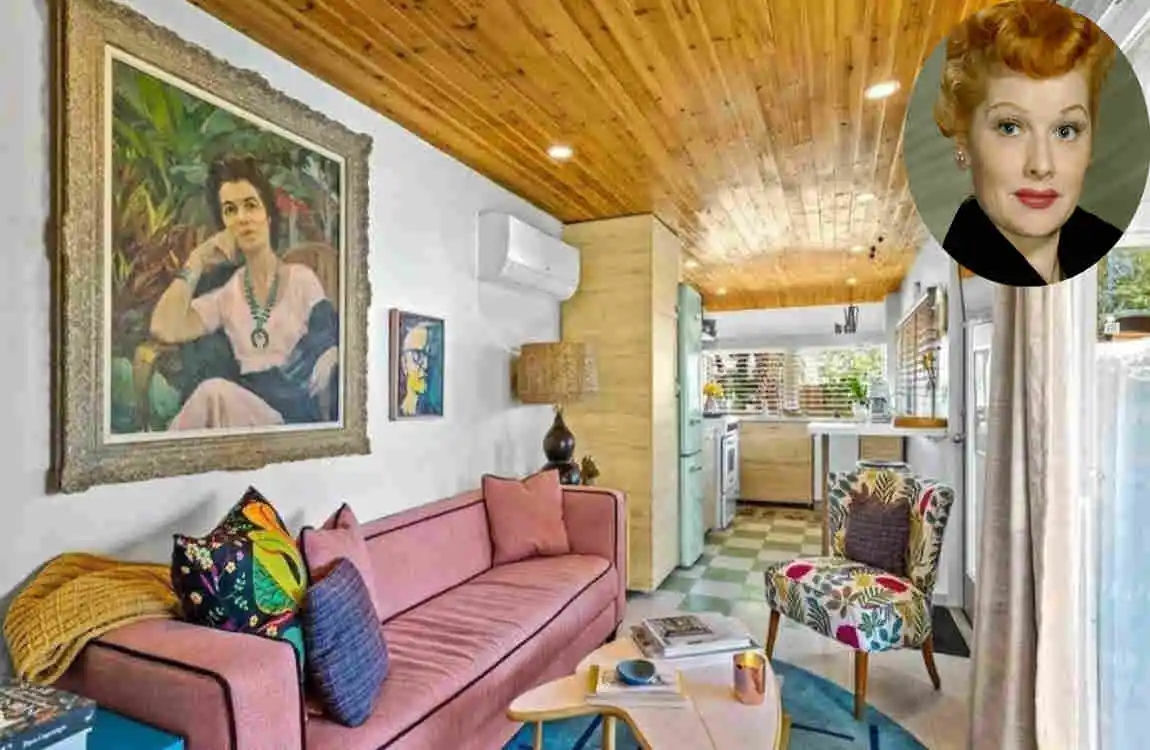
From Jamestown to Stardom
Lucille Ball’s journey to Hollywood wasn’t an overnight success story. Leaving behind the familiarity of Jamestown, she ventured to New York city and later to Los Angeles to pursue her dream of becoming an actress. Her upbringing in Jamestown, marked by hard work and resilience, played a pivotal role in shaping her determination.
A Reflection of Growth
The transition from her modest homes in Jamestown to the bright lights of Hollywood mirrored her personal and professional evolution. While her childhood homes in New York spoke of her roots, her later residences reflected the star she had become. Her early struggles and triumphs in Hollywood were deeply influenced by the grounding values instilled during her formative years in Jamestown.
The Glamorous Beverly Hills Home
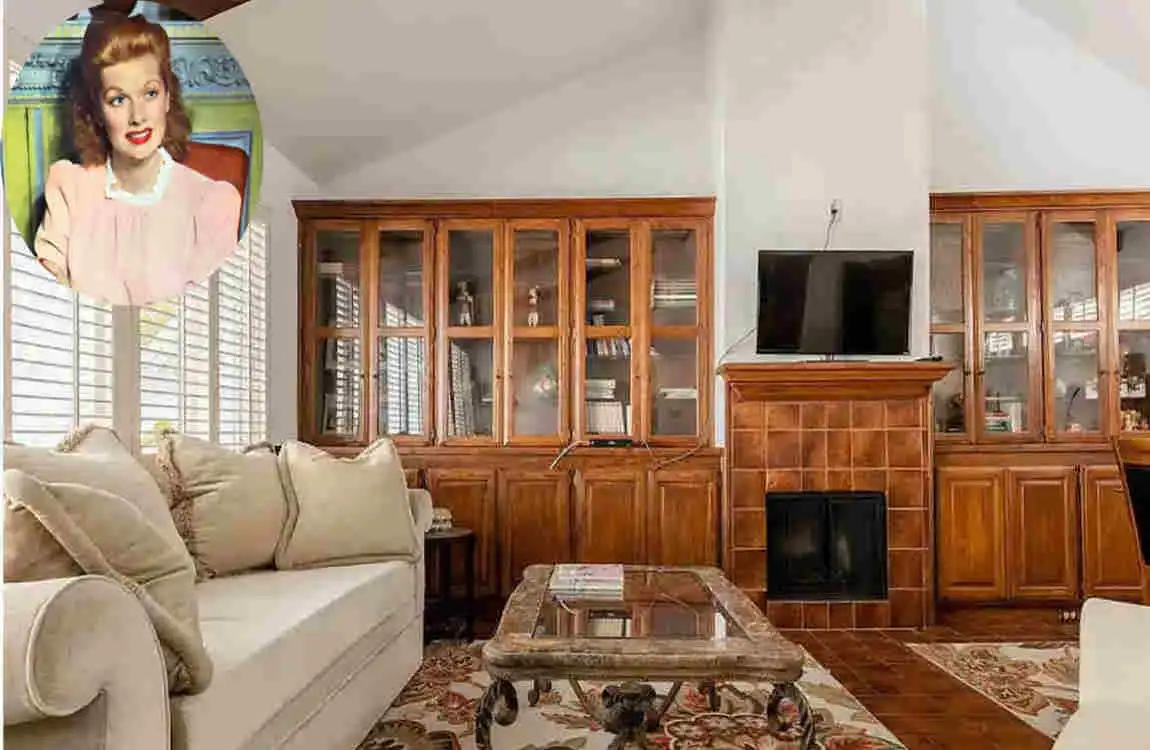
A Star’s Retreat in Beverly Hills
At the height of her career, Lucille Ball and her husband, Desi Arnaz, purchased a luxurious home in Beverly Hills. This house became a symbol of her success, a stark contrast to her humble beginnings in Jamestown. Nestled in the opulent neighborhoods of Beverly Hills, the house stood as a testament to the couple’s achievements in the entertainment industry.
Architectural Style and Interior Décor
Lucille Ball’s Beverly Hills home reflected the glamour and sophistication of Hollywood’s golden age. The house boasted a stunning architectural design, blending classic elegance with modern touches. Inside, the decor was a mix of bold colors and tasteful furnishings, reflecting Lucy’s vibrant personality and impeccable taste.
The property included spacious living areas, lush gardens, and a pool—a perfect setting for entertaining. From hosting extravagant parties to spending quiet family evenings, the house was a haven for Lucy, Desi, and their children.
A Peek Into Her Lifestyle
The Beverly Hills home wasn’t just a place to live—it was a hub for creativity and celebration. Lucille Ball and Desi Arnaz often entertained Hollywood’s elite, turning their home into a gathering place for stars. Anecdotes from these events paint a vivid picture of the lively, glamorous atmosphere that defined their lives.
The Home’s Legacy Today
Although Lucille Ball’s Beverly Hills home has changed ownership over the years, it remains a point of interest for fans and historians. Its legacy lives on, not just as a beautiful property but as a symbol of Lucy’s incredible journey from Jamestown to Hollywood royalty.
Lucille Ball’s Legacy and Her Homes’ Cultural Impact
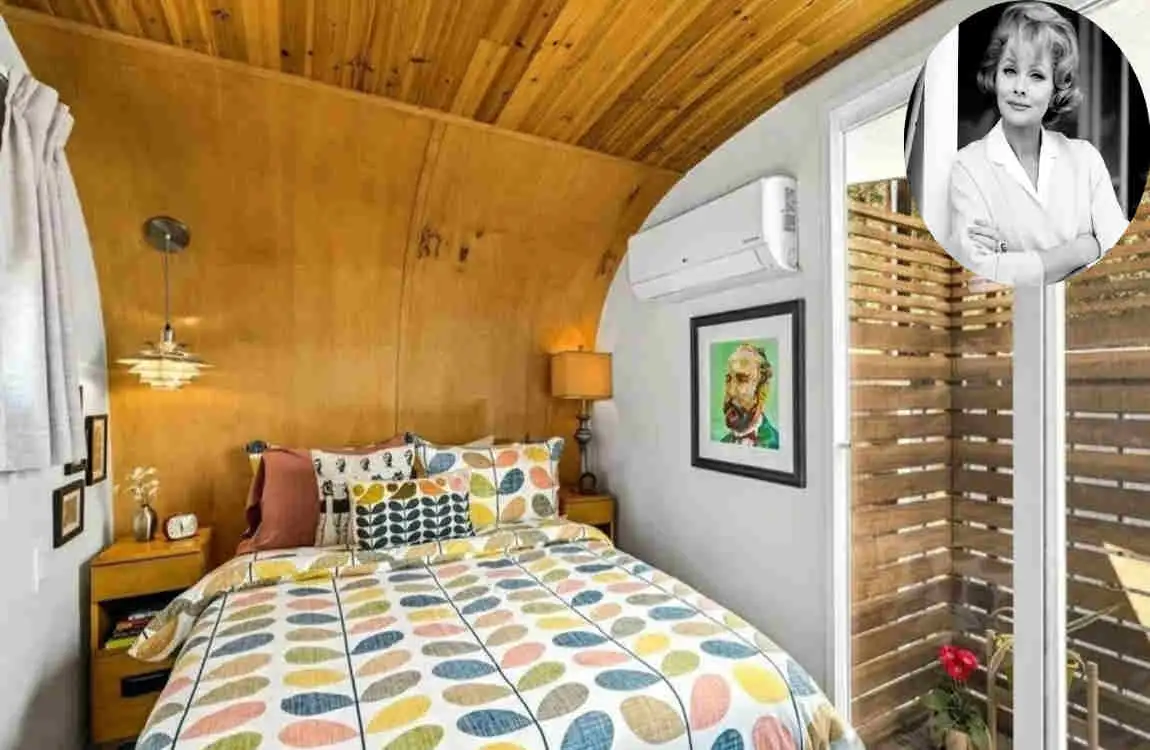
A Reflection of Her Life’s Stages
Lucille Ball’s homes are more than just physical spaces—they’re reflections of her life’s journey. From the modest homes in Jamestown to the luxurious estate in Beverly Hills, these houses tell the story of a small-town girl who became a global icon. Each home represents a different chapter, capturing her growth, struggles, and triumphs.
Preserving History and Legacy
Today, Lucille Ball’s homes play a vital role in preserving her legacy. In Jamestown, fans can visit the Lucille Ball Desi Arnaz Museum, which celebrates her life and career. Statues, guided tours, and events further connect fans to her story. Meanwhile, her Beverly Hills home continues to captivate those who admire Hollywood’s golden era.
Engaging Fans and Historians
Lucille Ball’s historic homes are more than just relics of the past—they’re living connections to an extraordinary life. Fans and historians alike engage with these spaces to deepen their understanding of Lucy’s story. Whether it’s visiting Jamestown or exploring the legacy of her Beverly Hills residence, these homes inspire nostalgia and admiration.
Lucille Ball House FAQ
Where was Lucille Ball born?
Lucille Ball was born on August 6, 1911, in Jamestown, New York. Her birthplace was a modest home located at 69 Stewart Avenue. This house holds historical significance as the starting point of her incredible journey from a small-town girl to a Hollywood icon .
Where did Lucille Ball grow up?
Lucille Ball spent much of her childhood in a home located at 59 Lucy Lane (formerly 8th Street) in Celoron, New York, a small village near Jamestown. She lived there from the age of eight until her teenage years, when she left for New York City to pursue acting .
The house, originally built in the late 19th century, was owned by her grandparents and played a significant role in shaping her early life. Today, the home has been restored and renamed Lucy Lane in her honor .
What is the significance of Lucille Ball’s Beverly Hills home?
Lucille Ball’s most famous residence is her Beverly Hills home, located at 1000 North Roxbury Drive. She and her husband, Desi Arnaz, purchased this two-story colonial-style house in 1954, during the height of their success with I Love Lucy. The couple lived there together until their divorce in 1960, and Lucille continued to reside in the home until her death in 1989 .
The house became a symbol of her Hollywood success and was known for its elegant design, lush gardens, and frequent gatherings of Hollywood’s elite. It remains a private residence today but is a popular point of interest for fans .
Did Lucille Ball own other homes?
Yes, Lucille Ball owned several homes throughout her life, including:
- Palm Springs Home: Known as “The Lucy House,” this Spanish-style home in Palm Springs featured terracotta roofs and a guest casita. It was located in the prestigious El Mirador neighborhood .
- Thunderbird Country Club Home: Located in Rancho Mirage, California, this home offered stunning views of Mount San Jacinto. Lucille described it in her autobiography as a serene retreat. The property was extensively remodeled in 2002 .
- First Hollywood Home: Before moving to Beverly Hills, Lucille Ball lived in a smaller Hollywood home. This property, listed at $1.75 million in recent years, featured two bedrooms, two baths, and a charming patio .
Can fans visit Lucille Ball’s childhood home?
Lucille Ball’s childhood home at 59 Lucy Lane is a private residence, but it has been restored and occasionally opens for tours or special events. Fans can also visit the nearby Lucille Ball Desi Arnaz Museum in Jamestown, which celebrates her life and career .
Where Does Lucille Ball Currently Live?
Lucille Ball does not currently live anywhere as she passed away in 1989. During her life, she lived in several homes, most notably a house on North Roxbury Drive in Beverly Hills, California, where she lived from 1954 until her death. This two-story colonial house was purchased with her husband Desi Arnaz and remained her primary residence through the height of her career and until she died.
Lucille Ball House Photos
